Spanning from 1837 to 1901, the Victorian era left an indelible mark on many Christmas traditions still celebrated today. Queen Victoria and her German-born husband, Prince Albert, popularized the Christmas tree in Britain, and soon after, the Victorian Christmas emerged as a symbol of warmth, hospitality, and craft. After all, our favorite holiday classics such as A Christmas Carol or Silent Night were born in the 19th century. Join me as I explore ways to achieve an authentic Victorian Christmas aesthetic at home.
*THIS POST CONTAINS AFFILIATE LINKS WHICH MEANS I WILL MAKE A SMALL COMMISSION OFF OF QUALIFYING ORDERS.
THANK YOU FOR SUPPORTING WHAT I DO*
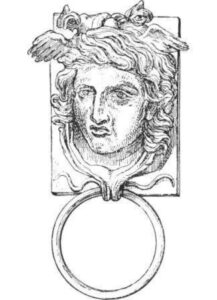
SUBSCRIBE
AND GET THE FREE NEWSLETTER
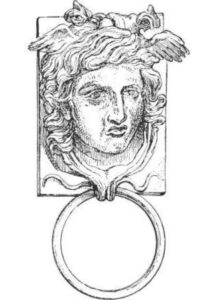
It’s not by accident that Victorian Christmas is a thing. The Industrial Revolution played an important role in the Christmas craze of the 19th century, making toys more affordable through mass production.
The Victorian era also saw the revival of Father Christmas as a central figure in the festive season, blending ancient folklore with new traditions. Rooted in England’s medieval history, Father Christmas originally symbolized the spirit of good cheer, feasting, and merriment during midwinter celebrations. However, his presence waned after the Puritan suppression of Christmas in the 17th century. Victorian imagery reimagined Father Christmas as a jovial bearded figure dressed in a fur-lined robe, often shown bringing warmth and gifts.
The Victorians embraced caroling, festive cards, and charitable giving, aligning Christmas with generosity and goodwill. This transformation established many customs that continue to define the holiday season today.
While Queen Charlotte, the wife of George III, was the first to set up a Christmas tree at Queen’s Lodge (Windsor) in 1800, it is Prince Albert who is credited with popularizing the Christmas tree tradition in the United Kingdom. Illustrated in publications like the Illustrated London News, the royal family’s tree adorned with candles, ornaments, and gifts inspired households across the country to adopt the practice.
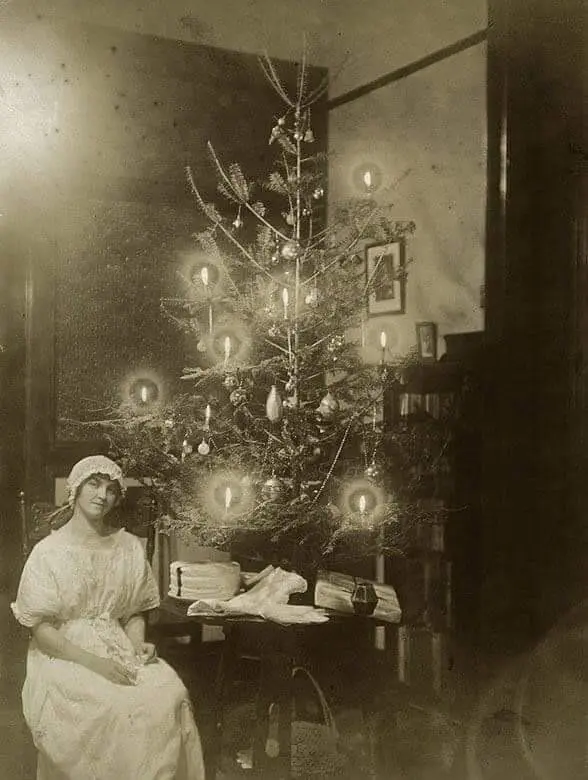
While most of us associate the Victorian era with splendor and grandeur, let’s keep in mind that tons of people were poor or very poor. Following Mr. Victorian’s remarks, they often had to choose between a tree or a duck for their Christmas dinner.
Therefore, as popular as fir trees were, the less well-to-do Victorians were also big on experimenting with homemade trees. Those were made from goose feathers painted green (I love the resourcefulness!).
Now that I’ve briefly covered the history of Victorian Christmas, let me help you create a Victorian-inspired holiday mood in your home.
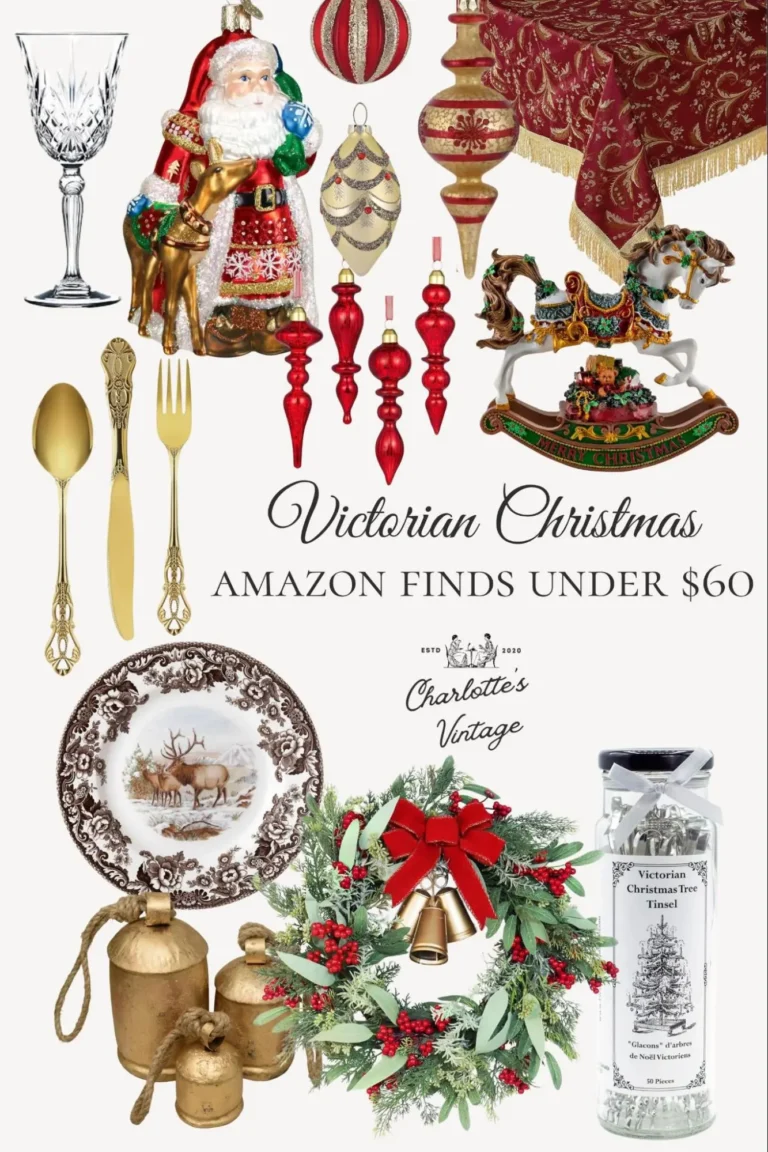
As Mr. Victorian rightly points out, large trees were a luxury only wealthy Victorians could afford. Most of the time, people from the lower and middle classes opted for much smaller and sparser trees that they would place on tables to appear taller. However, small and sparse didn’t mean modest – the trees were usually heavily decorated with ornaments, tinsel, and candles.
Just look at these merry Victorians with their tree!
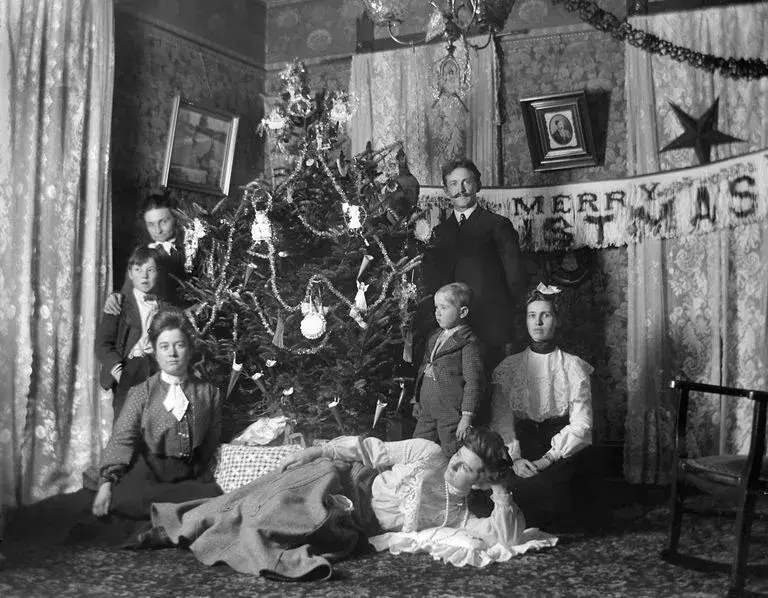
Source: House Crazy Sarah
If you want to do Victorian Christmas right, consider getting a smaller tree with fewer branches and filling the void with abundant ornaments. To expose your tree better, place it on the table or suspend it from the ceiling in a cage or basket using chains. This is the option I’m going for this season, mostly because of our cats.

Source: Sliver Owl Studio on Etsy
Now that you have your tree, let’s talk about the decorations. Victorian Christmas trees were decorated in a style that emphasized homemade crafts and natural materials. Rather than relying on plastic or glittery baubles, aim for:
Some of these ornaments can be handmade using period techniques, such as paper quilling or decoupage for more authenticity.
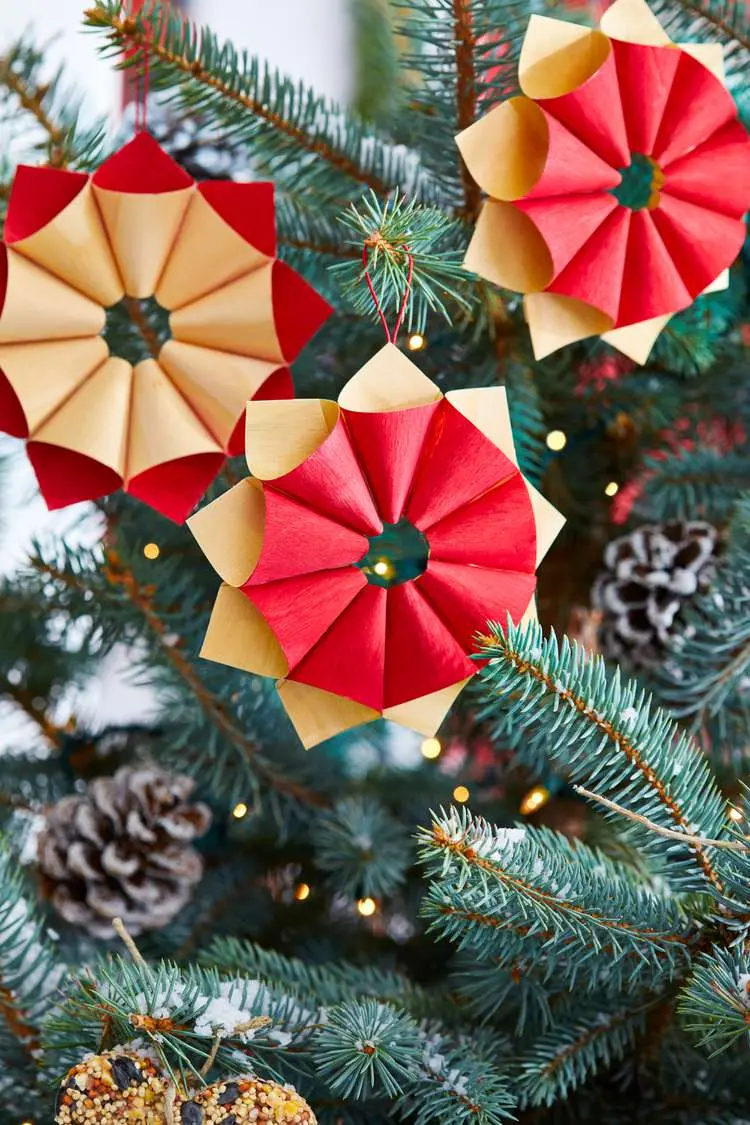
Small toys, tin figures, and metal or mercury glass ornaments were also popular, so look for these styles in antique stores or on Etsy, or make replicas using period-correct materials.
Wrapping gifts in fabric instead of paper has both historical precedence and a charming effect. Use velvet, linen, or muslin in rich jewel tones like emerald, burgundy, and sapphire.
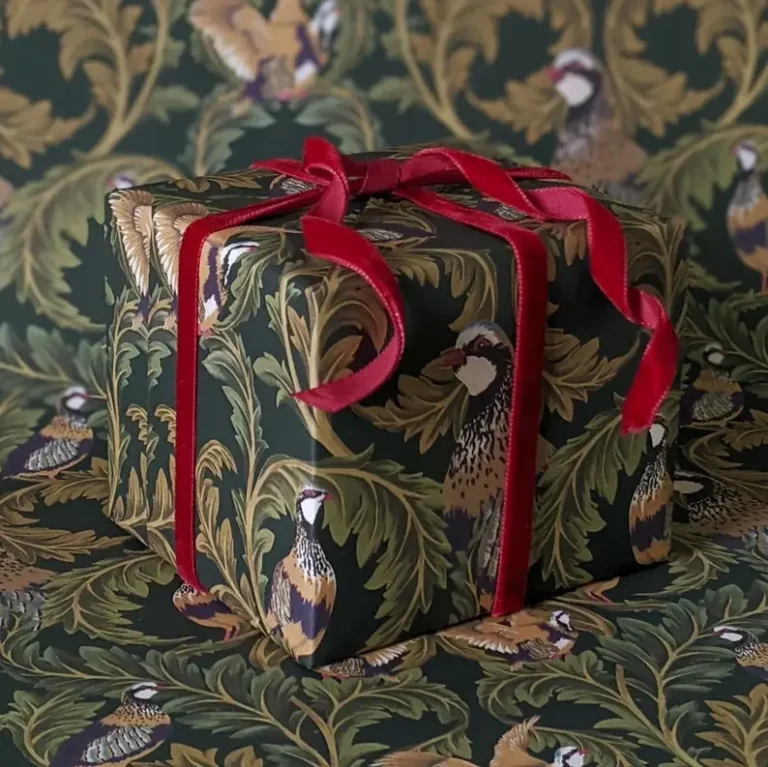
Source: Tuppence Collective on Etsy
If you prefer paper, choose one with intricate Victorian designs, like toile or William Morris’ botanical illustrations.
To secure the fabric, tie packages with lace or silk ribbon rather than adhesive tape. Add small decorative items to the bows—like sprigs of holly, mini bells, or pinecones—to enhance the Victorian feel.
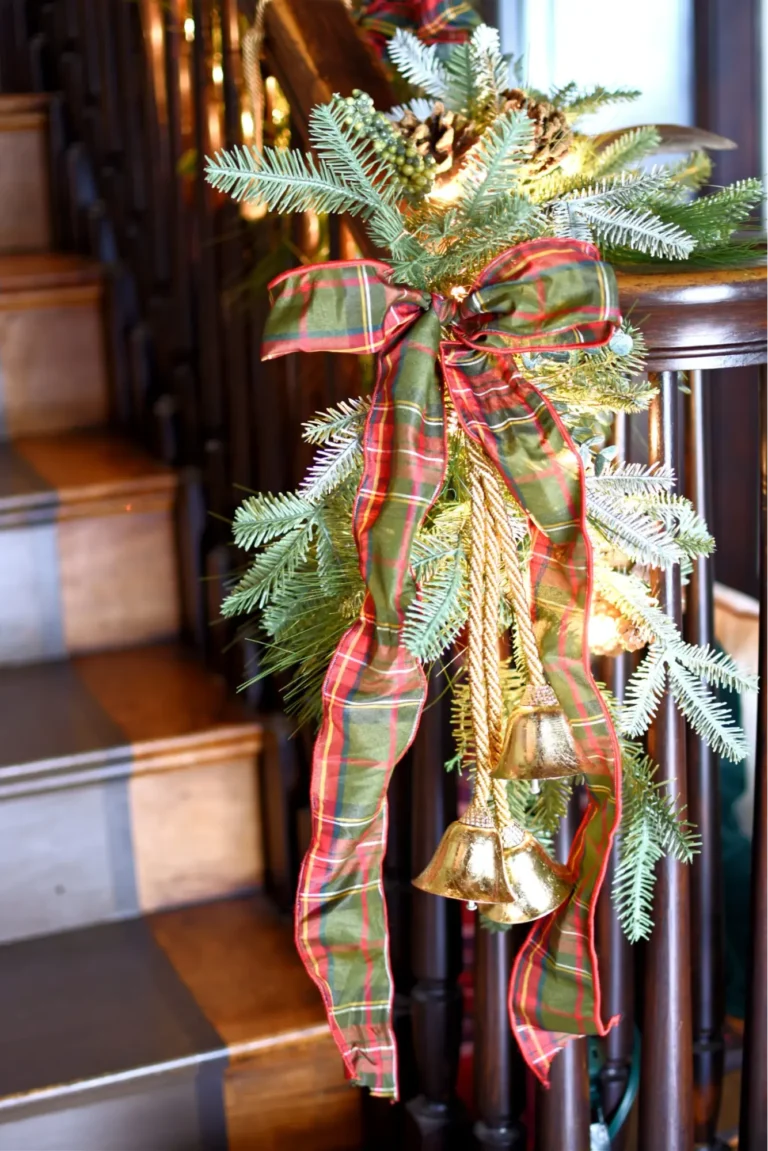
Source: Follow The Yellow Brick Home
Victorian garlands often included natural and organic materials such as:
Craft your garland by intertwining sprigs of evergreens with holly, laurel, and ivy, then accenting it with dried oranges or apples.
To take it a step further, attach small gold bells or ribbons. This garland style is ideal for mantelpieces, banisters, or windows, providing a classic Victorian accent.
For an authentic Victorian Christmas dinner, opt for a fine lace or damask tablecloth as the base. Use china in a floral pattern, silver or gold-plated cutlery, and crystal glassware for drinks.
The Victorians favored elaborate table settings with centerpieces made from natural elements, so create a tablescape with candles, greenery, and a bowl of seasonal fruits such as pomegranates, oranges, and nuts. Incorporating antique pieces or replicas can add authenticity to your table.
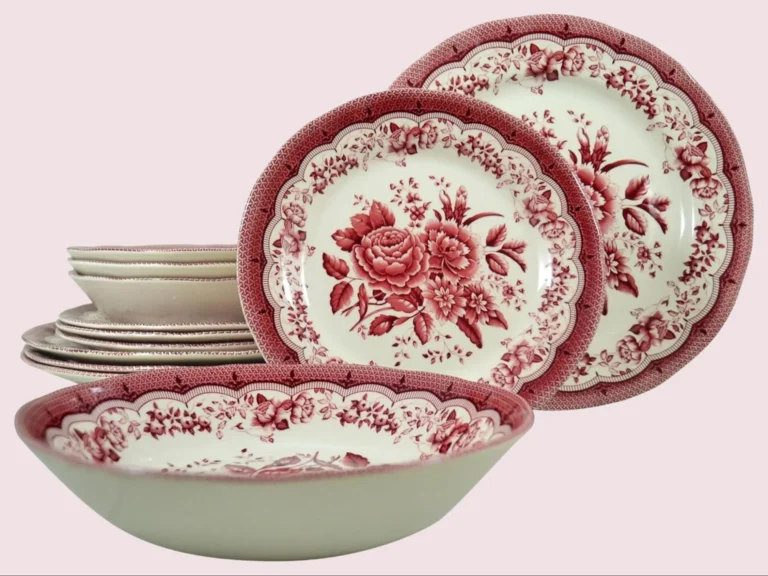
While electric lights are practical, real candles provide the flickering, warm glow central to Victorian holiday decor.
Tapered candles in brass, silver, or wooden candlesticks add elegance, while beeswax candles lend a more rustic look. Place these candles on mantels, window sills, and tables to create a warm, glowing atmosphere.
Decorating the Christmas tree with candles was also very popular in the Victorian era, though I strongly advise against doing that for obvious reasons. If you want to recreate the Christmas tree candle effect safely, I suggest using these authentic-looking faux candles.

Source: Rowen & Wren
Victorian wreaths were often large and, again, filled with greenery, fruit, nuts, and flowers. To create your own, start with a base of evergreen boughs, then weave in clusters of berries, pinecones, dried flowers, or small fruits.
Many Victorian wreaths also included ribbons in shades of gold, red, or forest green.
In the Victorian tradition, stockings weren’t just simple socks; they were elaborately decorated items, often with embroidery, lace, or beading.
You can create your own Victorian-inspired stockings by starting with a plain wool or velvet stocking and then adding a lace trim around the top.
Embroidery or appliqués featuring seasonal motifs—holly, ivy, or bells—also fit well with the theme.
Hang stockings by the fireplace or on the staircase railing. If you don’t have either – create a Christmas stocking garland using a velvet ribbon and hang it anywhere you wish.
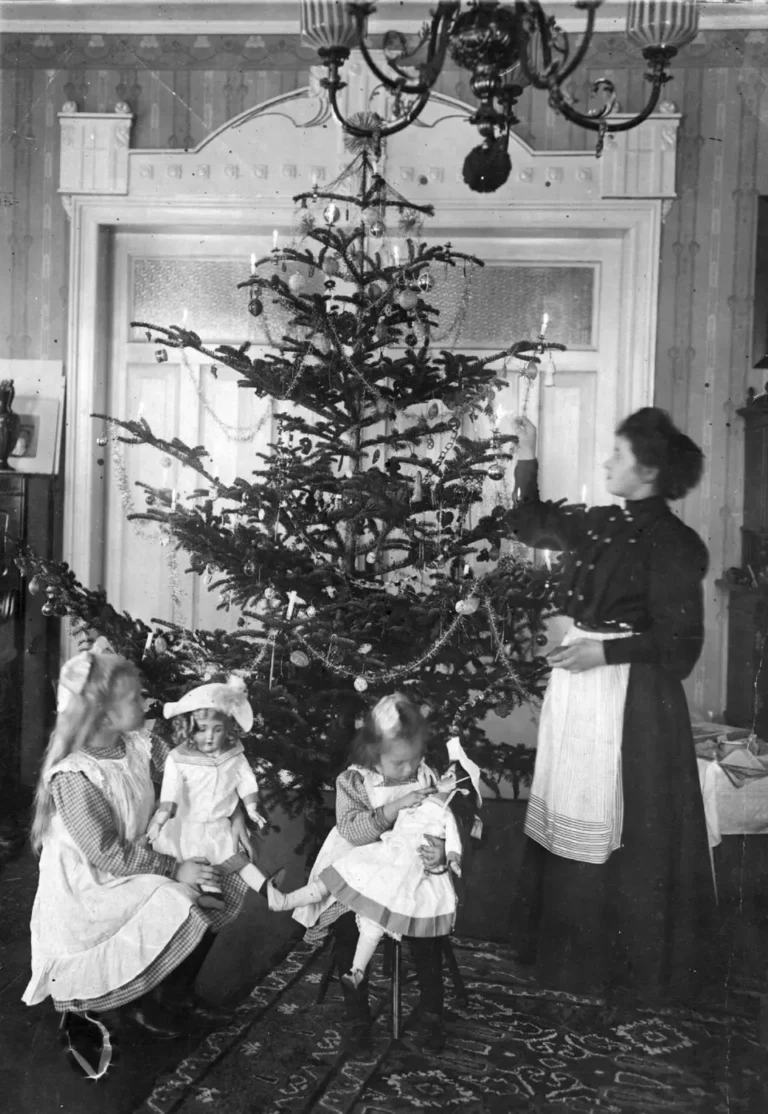
Tinsel, an invention of the 17th century that was popular in Victorian times, is a wonderful way to add an elegant shimmer to your Victorian-inspired tree. Victorian-era tinsel used in upper class homes was made of real silver, though today’s alternatives offer a similar look without the expense.
Ribbons in luxurious fabrics like velvet or satin were also used to accent the tree. Choose colors that complement your theme, whether it’s deep red, green, or gold.
Paper crafts were popular in the Victorian era, as families often hand-made their decorations. To replicate this, try cutting intricate paper snowflakes and paper chains from cardstock or construction paper.
You can also find PNG files of Victorian images depicting Father Christmas, angels, carolers, or Christmas scenes to print, cut out, and make into a bunting.
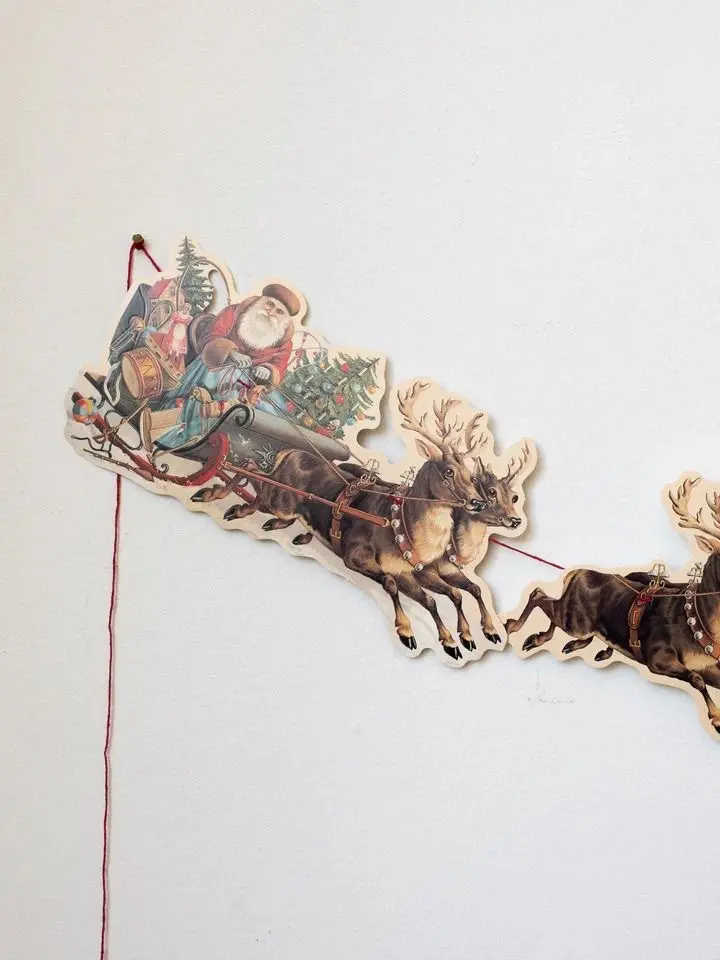
Source: Heirloom Art Co.
These decorations can be hung on the tree, strung along walls, or draped across windows — pretty much anywhere you wish.
As I’ve already mentioned, Victorians decorated their homes with fresh greenery from the start of the holiday season, often incorporating branches of holly, ivy, and fir around the home.
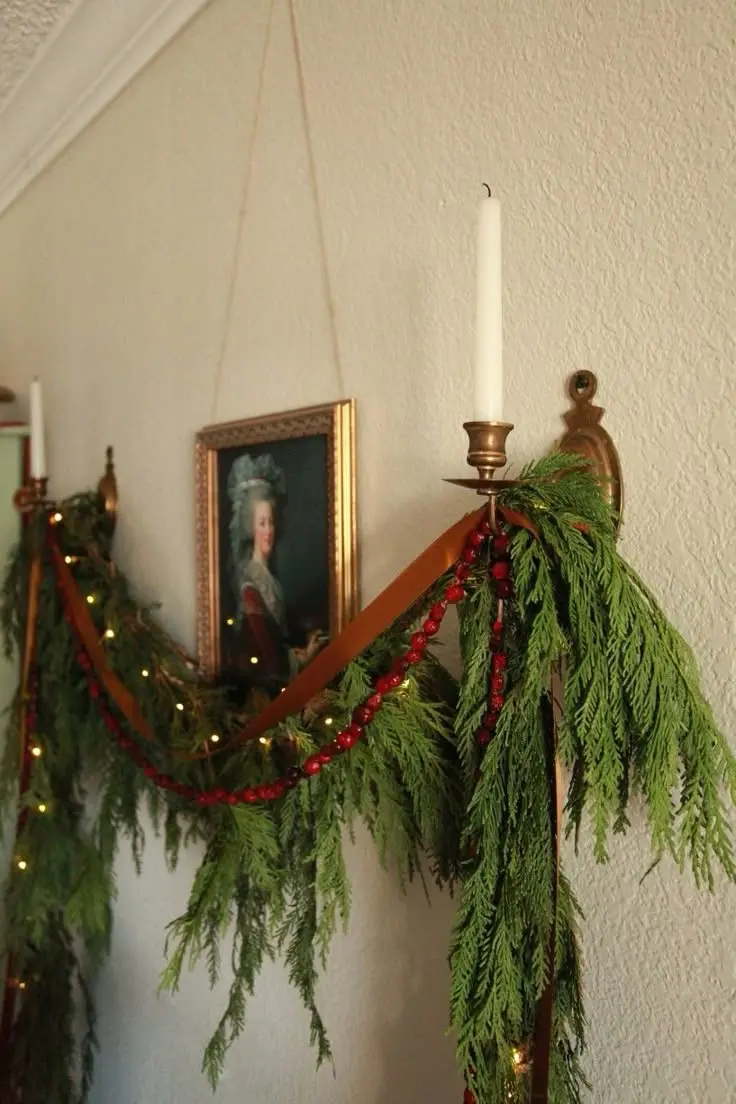
Source: Pinterest
Place small arrangements in vases, drape evergreen boughs over mantels, or frame doorways with garlands to mirror this approach.
Adding sprigs of rosemary or thyme can add a subtle, pleasant fragrance and another touch of historical authenticity.
Exchanging Christmas cards became popular during the Victorian era, with beautifully illustrated cards depicting angels, winter landscapes, animals, birds, and charming Christmas scenes.
Use vintage-style Christmas cards as part of your decor: display them on furniture, string them along a ribbon for a garland effect, or arrange them in a decorative bowl.
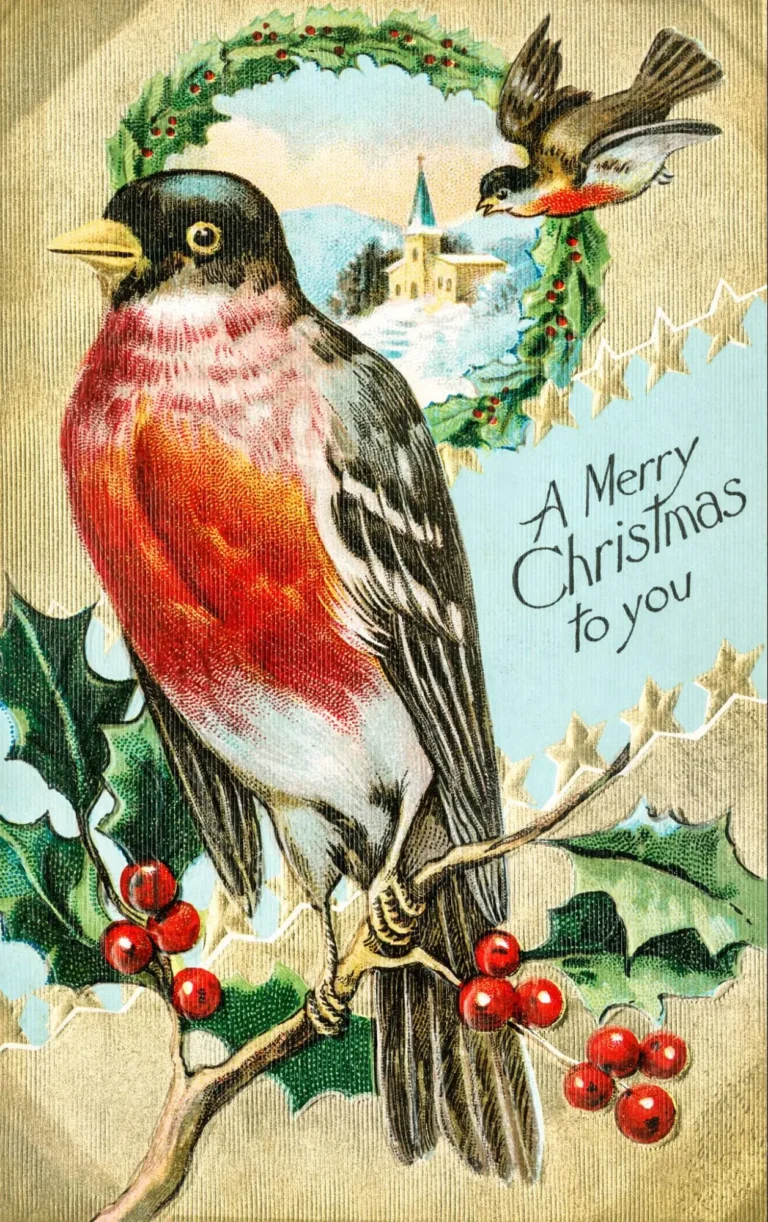
Source: Public domain
For an authentic look, seek out reproductions of Victorian cards or purchase handmade versions with period-appropriate illustrations.
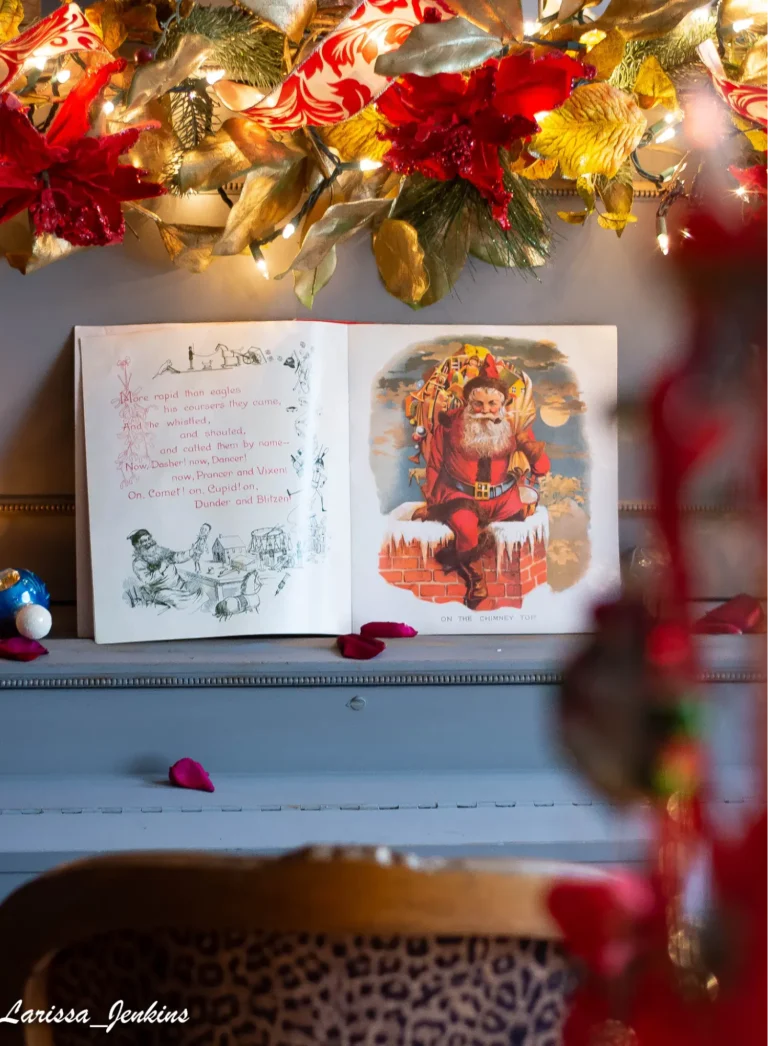
Source: Welch House 1900
Christmas-themed books and/or sheet music from the 19th century will really set the tone for a Victorian holiday celebration. Try looking for an authentic copy of A Christmas Carol or something modeled after the 19th century version.
And Victorian sheet music or music posters are a wonderful and unique idea to make the home feel even more like it’s the 1800s. You can find digital downloads of Silent Night, Jingle Bells, and other Christmas favorites for super cheap on Etsy.
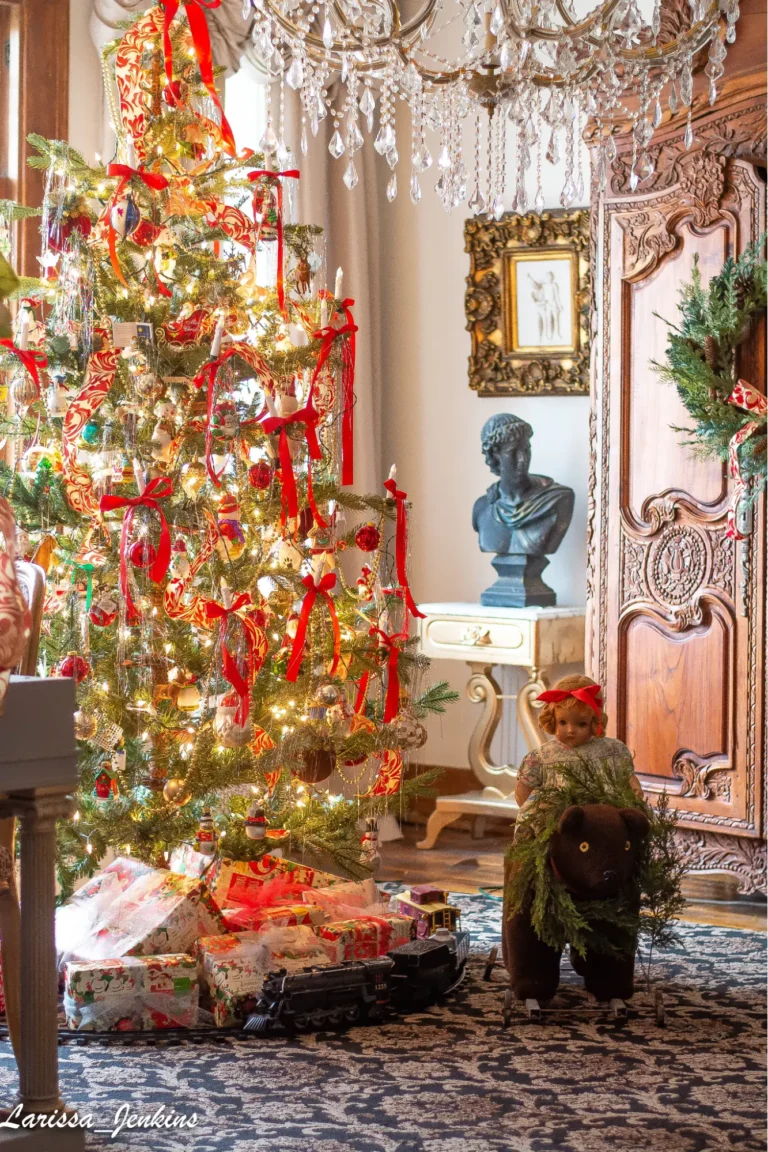
Source: Welch House 1900
Christmas is unquestionably the holiday of children and children’s toys, so go for a vintage or vintage-style:
These old-fashioned toys will bring a nostalgic vibe to your home regardless of whether you have kids or not.
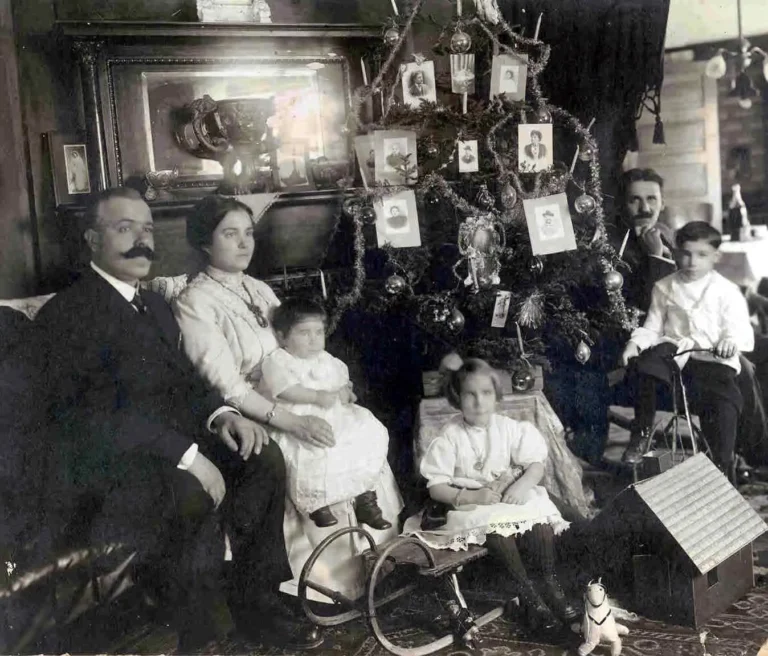
Source: Welch House 1900
I think Victorian photography has an aura of mysticism and I bet many of you will agree. The above photo proves that in the 19th century portrait photos, for example of deceased loved ones, were a popular way of decorating the Christmas tree. If you wish to recreate this strange but intriguing Victorian custom, look for authentic 19th-century photos on Etsy.
PRO TIP: Create a Victorian-inspired Christmas garland by attaching old photos to holly branches using paper clips.
Edible decorations were a beloved Victorian tradition, providing a fun and practical way to decorate while keeping holiday treats on hand.
Items such as:
can be hung on the tree, strung along garlands, or used as place settings at the dinner table.
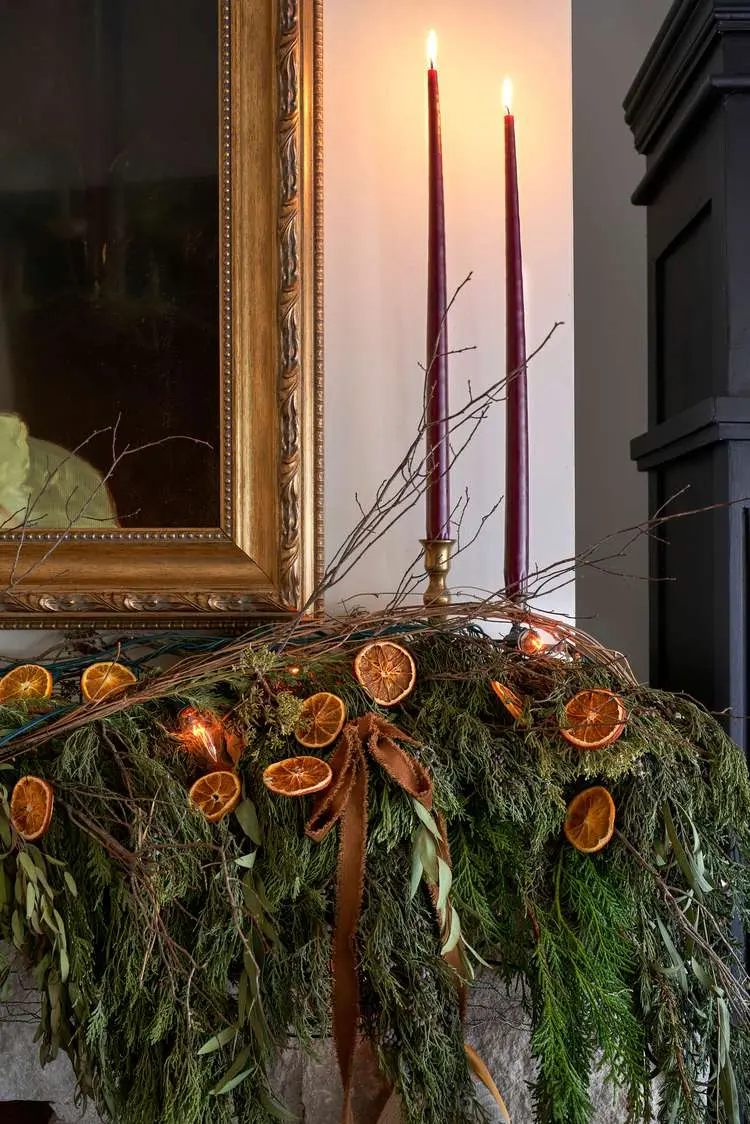
Source: James Schroder via Better Homes & Gardens
Gingerbread spices – cinnamon, ginger, nutmeg, and clove – will make your home smell so lovely you’ll wish the festive season never ended!
Conclusion
Creating a Victorian-inspired Christmas involves not only selecting the right decor but also embracing the values of craft and detail central to Victorian sensibilities. A Victorian Christmas is not only about the items you choose to include, but the actual 19th-century atmosphere which can be achieved with candles, some paper chains and garlands, and edible decorations.